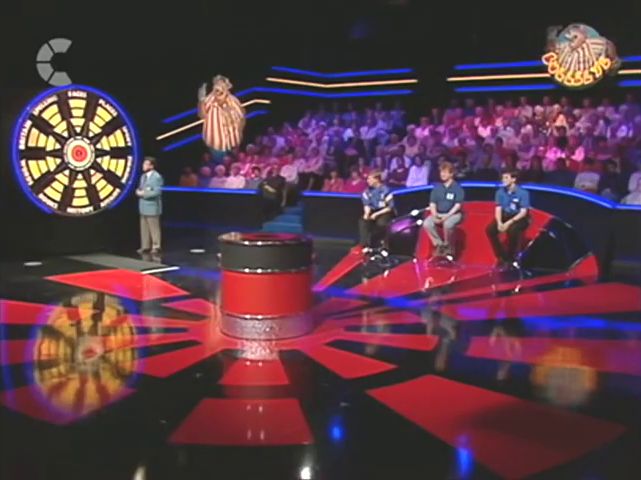In this part of the website, we will look at how to identify which series of Bullseye you're watching with the minimum of information. Why would anyone want to do this? I don't know, but here we are.
There were fourteen series of Bullseye presented by Jim Bowen. Tony Green appeared in the first series as one of the professionals, and in every series after that, he did the scoring both on and off screen.
As far as I know Bullseye episodes are only shown on the Challenge TV channel. Currently, the episodes are shown sequentially by day, with different series at different times of day. This means that there can be two or three series being shown in parallel. It is also possible to see a completely random selection of episodes on YouTube, but these are often unlabelled or incorrectly labelled.
Without knowing the key signs, it is very difficult to know which episode or series you are watching - apart from the year at the very end of the closing credits, and the occasional comment from Jim Bowen, there is nothing in an episode that specifically says which episode or series it is from. The years at the end of the credits sometimes relate to when the program was filmed, and sometimes relate to when the program was originally shown. They can be helpful in narrowing down the year, but no guarantee. If you know the year, the name of the professional in the charity round will narrow down the episode to one of two series, and sometimes to one particular series.
At the time of writing this, the Wikipedia page for Bullseye had a list of episodes with the first date of broadcast and the guest who appeared. However, all of the list except the first two series was deleted because there were no sources. There were gaps in the list and other sources sometimes put the professional guests in a different episode. YouTube frequently has episode labelling that matches the Wikipedia list, but too often, it has the episodes completely wrong and even the wrong series.
I think ITV or Challenge might know the true order, but I haven't seen it anywhere official. There used to be talk about a lot of missing episodes, but a number of them have since been found and shown by Challenge. A few of the still missing episodes are on YouTube, uploaded by people who videoed them when they were first broadcast.
The first two episodes of the first series were considered too bad to be shown - they are ultimately practice episodes. These are sometimes described as pilots, which isn't strictly true because they weren't made for the purpose of getting a series commissioned. Jim Bowen spoke about an episode where two contestants became drunk and annoying at the end, and the episode couldn't be edited to be broadcastable. There is also the episode that featured that murderer, which will probably never be shown on Challenge. I think that was series 9, episode 19. I don't know for sure who the professional was on that episode, but there's a 50:50 chance it was Deta Hedman. (In series 10, Jim Bowen said that Hedman appeared the previous year, but the Wikipedia page doesn't mention her, and there are two gaps where she could have been.)
I think it is best to identify episodes by the series number and who the guest dart player was that week, along with a likely episode number from the Wikipedia list. For example, "Series 1, episode 10, Jocky Wilson", with the understanding that the episode number might not be correct.
Even if the Wikipedia list is not 100% accurate, it is very useful. I've copied and amended it on this page, along with a list of professionals and when they appeared.
The rest of these pages are all about how to identify which series you are watching. With practice, you should be able to recognise nearly every series from just seeing a few seconds or even just one image. Series 13 and 14 are identical - the only way to distinguish them is to wait for the very end to see the date (1993 or 1995) and the Carlton eclipse logo that only appears in series 14.
Before we start, here are some definitions to make the explanation clearer.
Pairs - the contestants are in pairs. One is good at darts, and will be the primary dart player; the other is good at general knowledge and will answer the questions. We will call them the thrower and the quizzer.
The category board - this is used in the first round. It has ten categories written around the outside. If a thrower hits the section named by the quizzer in their pair, the pair win some money, and the quizzer will be asked a question based on that section.

The traditional board - this is the normal design of dart board. It is used in the second half of the quiz section of the show, in the professional charity round, and in the "101 or more" round. In the final round, it sometimes has a "Bully's Prize Gamble 101 in 6 darts" border put around it.
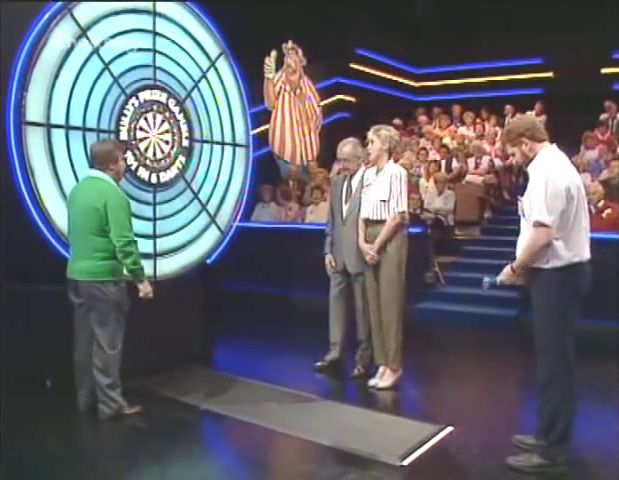
The prize board - this is the board that is used for the winners of Bullseye to win non-cash prizes. It is divided into sectors. If the players hit the appropriate sector, they win the relevant prize.

The order-of-play board is used to determine the order in which the contestants will take their turns. The order of play is based on who can throw a dart nearest to the bull. In series 1, this board is used to determine the order of play and to settle any draws. In series 2, a similar board appears, but it is only used to determine what happens when there is a draw. The order-of-play board doesn't appear outside these series on television. There is a Shutterstock picture of Anne Diamond, Judith Hann, and Kenneth Kendall in the series 3 Christmas episode of Bullseye and they are standing in front of the order-of-play board. This suggests that the order-of-play board was still on the back of one of the double boards in series 3, but it was never shown on television. It must have still been used to determine the order of play before filming began. In series 4 onwards, there was a frame holding three boards (traditional, category and prize), so there was nowhere that an order-of-play board could have been put.
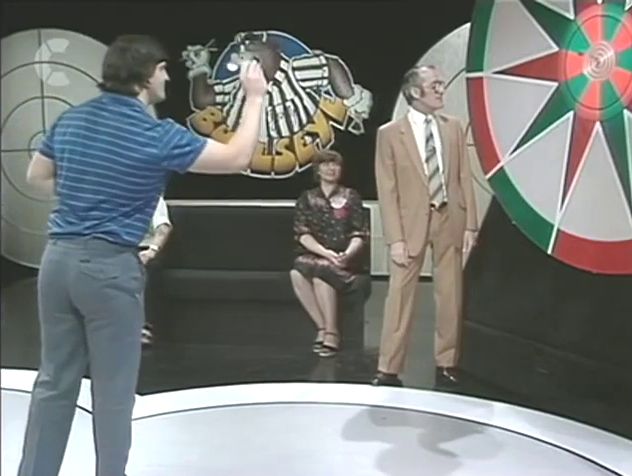
The oche is the line or dot behind which the dart players are supposed to stand when throwing darts at the board. In some series, there were several lines, while in the later series, there was just one line.

The "prize barrel" is the name I am giving to the little podium that Bowen uses to dispense prizes, and behind which he stands now and then. It is like a meeting place in the studio. The prize barrel in every series has a little shelf in the side (which is usually hidden from the camera), from which Bowen takes the consolation prizes before he places them on top. (In every series, the cash prizes are kept in the left hand pocket of Bowen's suit jacket.)
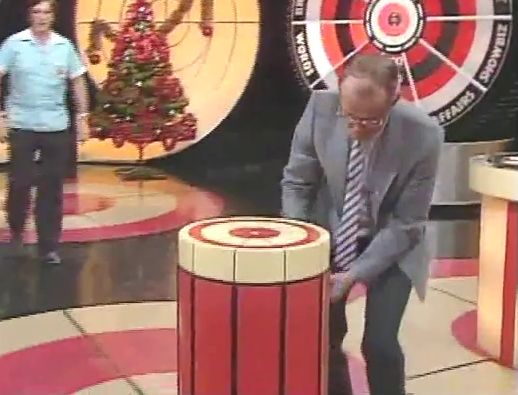
The "question carousel" is the stand on which Jim Bowen keeps the questions to ask the quiz contestants. The questions are held in little pigeon holes in the top. In every series, the top of the carousel rotates so that Bowen can reach the questions more easily.
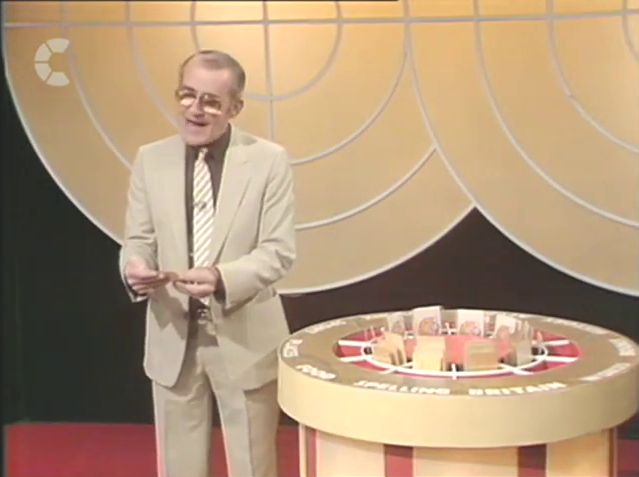
The "quiz desk" is where the quizzer contestants from each pair sit. Its design is often an easy way to narrow down which series is being shown.

The Star Prize room is where the Star Prize is kept. It is always hidden behind a screen that rises up once the winning pair have won or lost. As far as I can tell, the Star Prize room is always directly opposite the studio audience.

The thrower seats are the seats on which the three throwing contestants sit (and the quizzers sometimes at the start of the show). These vary from sofas to chairs depending on the series.
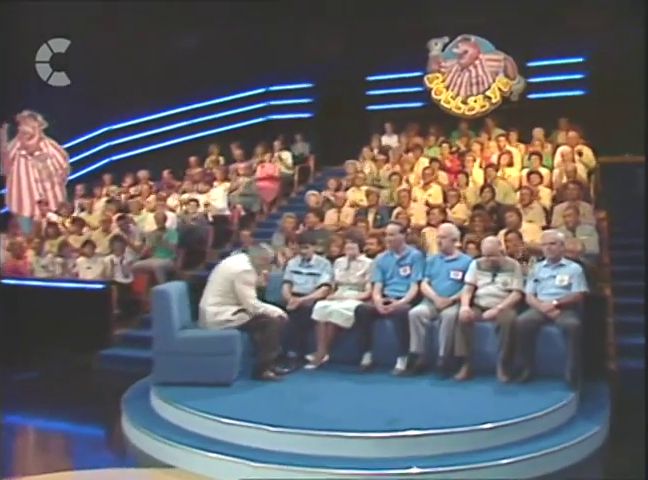
The "Throwing Bully" logo is the standard cartoon drawing of Bully throwing a dart with his right hand, while holding two other darts in his left hand.

The "Thumbs up Bully" logo is a drawing of Bully doing a thumbs up.
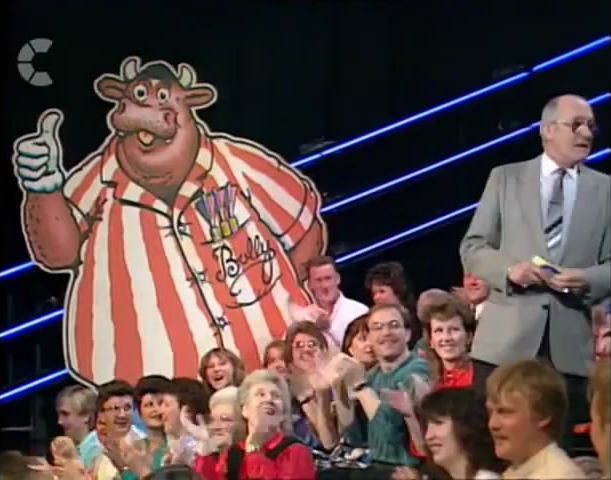
Series 3 (audience only visible at the very start and after the break):

Series 7 (8 by 8 central audience, triangular left-hand side):

Series 12 (very wide central audience, rectangular left-hand side):
